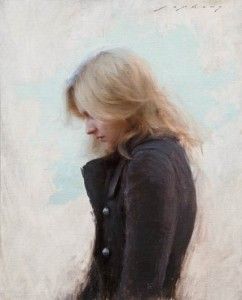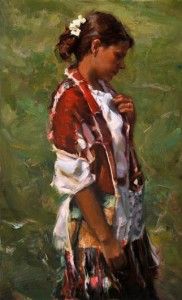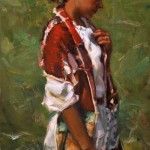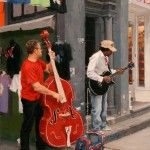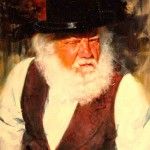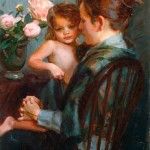By Bonnie Gangelhoff
Diane Waterhouse is fond of calling the Great American Figurative Exhibition her baby. Since its conception in 2006, she and her husband, landscape painter Ralph Waterhouse, have nurtured and cared for the nascent show as it has continually grown in stature. Now five years old, this celebration of the human figure in art has quickly gained a reputation among both painters and collectors as a museum-quality event.
The idea began simply enough, Diane recalled recently: “I decided there were just so many landscape shows that I thought it would be interesting to do something different and have a figurative show.” Fortunately, the couple owns Waterhouse Gallery in scenic downtown Santa Barbara, CA, so they didn’t have to look far to find a venue to host their event.
The first Great American Figurative Exhibition held at the gallery featured about 35 paintings; this year the annual presentation features nearly 100 works by award-winning painters such as Richard Schmid, Kim English, Jeremy Lipking, and Dan Gerhartz. While landscape shows do indeed abound, invitational figurative shows attracting the country’s top painters to a single gallery are far rarer.
Diane says one of the missions of the show is bringing together classic portraits and figurative works with what she calls “conversational figurative” works. By this she means paintings that depict people going about their daily lives—a chef working in a kitchen, patrons sipping coffee in a café, a couple visiting a museum, children playing on a sandy beach. Ralph adds that from an artist’s perspective, he finds it fascinating to see how different painters interpret such mirrors on life. “One artist can look at a table in a café and see glassware, while another sees the people sitting around the table,” he says.
According to Diane, the styles of works in the show are strictly traditional—ranging from highly rendered realism to impressionism but not venturing too far into the abstract realm.
Artists say this particular show appeals to them for a variety of reasons. “For me it’s beautifully eclectic, showing the pure representation of many different approaches to the human form in a non-competitive environment,” says Colorado painter Johanna Harmon. “By being a non-competitive event, it also honors the purpose of painting, allowing artists to create fine art without the intent of receiving recognition. I believe it more accurately represents the individual artist’s body of work, rather than showing one painting the artist may have set aside specifically with a competition in mind.”
While Harmon is correct that there are no formal awards like Artists’ Choice or Best of Show, the Waterhouses have come up with a few playful prizes of their own, such as giving an award to the Artist Who Has the Most Famous Father. Last year that honor went to Molly Schmid, daughter of Richard Schmid. Another is the award for the Artist Who Came the Farthest Distance. Stan Moeller won last year, having traveled some 2,600 miles from his home in York, ME.
What helps make the show special, according to Harmon, is that the Waterhouses have an understanding of the life of an artist. They look at things from both perspectives—from the gallery side and the artist’s side, she says.
For Utah-based painter Mike Malm, the quality of the work in the show is what stands out. “As an artist, you want to impress your peers, especially other figurative painters,” he says. “For this show you want to send your best efforts because you are hanging alongside highly accomplished painters. It pushes you. And it’s gratifying to be shown alongside painters you admire.”
Diane expects this year’s presentation to be another visual feast. “I think we are going in the right direction,” she says. “We keep raising the bar. The artists are giving us their best figurative works, and that’s all we can ask for.”
There’s only one real problem with the show, Diane explains. When “her baby” has gone to bed and the last artist has left Santa Barbara, a wave of depression sets in as she thinks about waiting another whole year for the next Great American Figurative Exhibition. “Maybe we will have to have two shows every year,” she says only half jokingly.
The show opens with a reception for the artists from 4:30 to 7:30 p.m. on Saturday, November 20, and is on view through December 21. For more information: 805.962. 8885 or www.waterhousegallery.com.
Featured in November 2010






